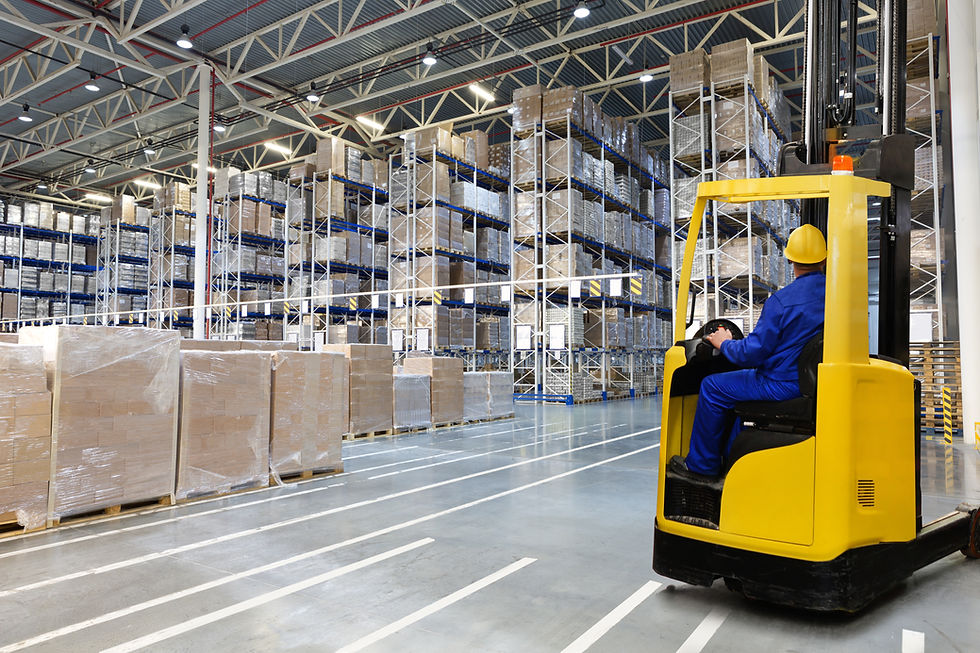The Hidden Costs Associated with Subleasing Warehouse Space
- Edison Vasquez

- Mar 6, 2024
- 4 min read

Subleasing warehouse space can seem like a cost-effective solution for businesses looking to optimize their real estate expenses. However, beneath the surface, there are hidden costs that tenants should be aware of. In this blog post, we'll explore these hidden costs, providing insights into areas such as marketing, brokerage fees, landlord sublease review, legal fees, and the carrying costs incurred during downtime when the space remains vacant.
Marketing Costs:
The Challenge of Visibility:
One of the hidden costs associated with subleasing warehouse space lies in the marketing efforts required to attract potential subtenants. Unlike leasing directly from the landlord, subtenants may not have the same level of visibility into available spaces. Therefore, the tenant is often responsible for marketing the subleased space.
Photography and Listing Expenses:
Creating an attractive listing involves professional photography, detailed descriptions, and potentially even virtual tours. These marketing materials come with associated costs that tenants must bear to effectively showcase the available warehouse space.
Subleasing warehouse space can seem like a cost-effective solution for businesses looking to optimize their real estate expenses. However, beneath the surface, there are hidden costs that tenants should be aware of.
Brokerage Fees:
Hiring a Sublease Broker:
Engaging the services of an Industrial Real Estate broker to sublease is a common practice, as it can streamline the process and increase the chances of finding suitable subtenants. However, this convenience comes at a cost. Brokerage fees, typically a percentage of the sublease value, add to the overall expenses of subleasing warehouse space.
Negotiating Brokerage Agreements:
In addition to the standard brokerage fees, tenants must also consider the negotiation of brokerage agreements. Clear communication on fee structures and responsibilities is essential to avoid misunderstandings and unexpected costs.
One of the hidden costs associated with subleasing warehouse space lies in the marketing efforts required to attract potential subtenants.
Landlord Sublease Review:
Consent and Administrative Fees:
Before proceeding with subleasing warehouse space, tenants must obtain the landlord's consent. Many leases include provisions for administrative fees associated with the review and approval process. These fees can vary, adding an extra layer of expense to the subleasing process.
Lease Compliance Costs:
Landlords often require subtenants to comply with the terms of the original lease. This may involve modifications or improvements to bring the space up to code, meeting the landlord's standards. The costs of ensuring compliance fall on the tenant subleasing the space.
Legal Fees:
Drafting and Reviewing Sublease Agreements:
Crafting a comprehensive sublease agreement is crucial to protecting both the tenant and the subtenant. Legal fees incurred in drafting and reviewing these agreements can be substantial, and it's essential to invest in legal counsel to ensure that all parties are protected and the terms are clear.
Resolving Disputes when Subleasing Warehouse:
In the event of disputes or disagreements between the tenant and subtenant, legal fees may also accrue during conflict resolution. Having a well-drafted sublease agreement can help mitigate potential disputes, but unforeseen circumstances may still arise.
Landlords often require subtenants to comply with the terms of the original lease.
Carrying Costs During Downtime:
Vacancy Period:
One of the most significant hidden costs of subleasing warehouse space is the potential downtime between tenants. If the subleased space remains vacant for an extended period, the tenant is responsible for the carrying costs, including rent, utilities, and maintenance, without generating revenue from the unused space.
Mitigating Vacancy Risks:
To minimize the impact of downtime, tenants should actively market the space, maintain flexibility in lease terms, and proactively seek new subtenants before the current lease expires. Being strategic and proactive can help reduce the carrying costs associated with a vacant warehouse.
Recovery will not be 100%
It is important for businesses to understand that the cost recovery of subleasing your space will not be 100% for several reasons. The first reason is all the costs and fees noted above. Paying for marketing, brokerage fees, and attorneys will add up and reduce the overall recovery from the subtenant income.
Second, the rate you can charge a subtenant for your space will be lower than what you are paying for your lease. Subleased space is rented at a lower rate than direct space to entice potential tenants to take your space at a lower cost than finding their own direct space.
It’s important to note that most industrial leases will have a clause that prevent Tenant from making a profit on the Sublease. Any rent above the current agreed rental rate will likely go to the Landlord.
While subleasing warehouse space may seem like an attractive option for businesses seeking to optimize costs, it's crucial to consider the additional – and often overlooked – expenses associated with this process. From marketing and brokerage fees to legal costs, landlord sublease review, and carrying costs during downtime, tenants must weigh the potential savings against these hidden financial implications.
To navigate the subleasing process successfully, tenants should engage in transparent communication with all involved parties, carefully review lease agreements, and develop a proactive strategy for marketing and subleasing the space efficiently. By being aware of the hidden costs and planning accordingly, businesses can make informed decisions that align with their financial goals and leasing objectives.
While subleasing warehouse space may seem like an attractive option for businesses seeking to optimize costs, it's crucial to consider the additional – and often overlooked – expenses associated with this process.
If you’re considering sub leasing your industrial space, or would like more information on exploring this option, give us a call today. We’d be happy to walk you through your options and prospective sub tenants for the space.
The Industrial Team at ComReal specializes on the industrial properties in South Florida. For over 40 years, out team has help users and investors located the right industrial property. Contact us for more information on the market and our industrial properties.

Follow Us on Social Media:















Yorumlar